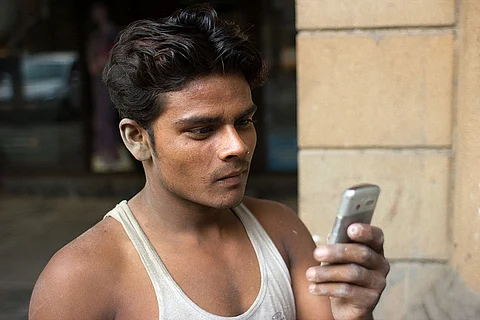

By Mayank Bidawataka
India is a huge country and one of its kind. It’s a land of diversity with diverse languages, cultures and attitudes.
One of the biggest differences in India is language diversity. We have over 20 official languages and over 6000 dialects. Making it difficult for someone from one part of the country to interact seamlessly with someone from another part. Then how does this India manage to interact with the world on the internet and its English form and design?
Internet Broken for the Indian Language User
Only 12% of India speaks English. The rest depend on Google’s translation prowess to make sense of the largely English form on the internet. The Indian language internet user doesn’t have it easy. They have to deal with broken sentences and wrong translations. That’s a sub-optimal solution for such a large populace that’s touted to be the future growth driver for the internet.
You’ll find very few Indian websites and apps that have multiple languages. Creating for Indians beyond the metros is usually an afterthought. But this needs to change if we want to expand the market beyond our cities.
Interestingly, 6% of the world speaks English and 18% of the world speaks an Indian language. That is almost 3x the number of the world’s English-speaking population. This makes it deserving enough to get an internet that they can enjoy without reading broken translations on the web.
The Indian Vernacular Internet User
Research points that the Indian language internet user trusts a website that has information in their preferred Indian language over an English site. They also trust a person with good credentials more than a generic website.
The largest newspaper penetrates just 2% of the country. But over 25% watch YouTube & TV. What does this tell you? That text is not the most preferred format of consumption for the majority.
This user has multiple faces. They are aspirational. They are curious. They are up-to-date about the latest through their network of friends and WhatsApp forwards. As widely believed, they can’t be assumed as a low-income group. And they aren’t always looking for frivolous things — they want progressive information. They aspire for equality of access. There isn’t one easy way to describe them.
The biggest commonality is not about what they are, but about what they aren’t — they aren’t English speakers.
Put these broad trends together and you understand that the internet is broken for this massive segment.
Over 275 million internet users today speak an Indian language and this is going to swell to about 550 million within the next 3 years. The non-English speaking segment of India is almost double the size of the United States.
The Internet for the Next Billion
When we build products for the next billion, we need to keep these broad preferences in mind. The product needs to cater to multiple segments and multiple preferences — not for a homogenous group.
Google, one of the most used products on the internet, enables discovery of information globally. But there’s a dearth of vernacular content on the web. A large part of the knowledge of India still lies within the minds of its people and they’ve never had an opportunity to share it. We need to create the easiest way for people to come and contribute this knowledge for millions to consume easily. A few startups and app such as Vokal are creating a repository of this knowledge through peer-to-peer interactions with most of these being between seekers and experts.
We need to enable a progressive India that enjoys the positives of diversity and bridges its negatives of communication and knowledge barriers.
Products need to keep in mind that text is not the dominant format of consumption when they try to move beyond Tier 1 cities. Voice and other audio video formats may be friendlier.
India needs to build an internet for the next billion, one product at a time — catering to the variety of languages that are a part of our cultural fabric. Vokal, for example, allows users to ask questions and answers using the voice and video functionality, in their preferred language. And enable experts to answer these questions — thus bridging the problem of access. Every recorded question and answer in voice is a knowledge snippet — something that can be accessed by millions in a format they prefer.
Imagine a Bengali sharing knowledge with a Tamilian without changing their language output. The impact of this technology is highest when used beyond basic communication and when used for sharing knowledge. Knowledge is the path to progress. For India to truly harness the power of the next billion, we need to bridge this knowledge gap. And bring within our fold the India that’s been ignored by today’s English internet.
Views expressed are author's own.
Mayank Bidawataka is co-founder of Vokal, which is trying to bridge the information and knowledge gap among these non-English internet users by enabling peer-to-peer knowledge sharing using voice. Mayank was one of the founding team members at redBus, after which he founded TheMediaAnt and Goodbox.